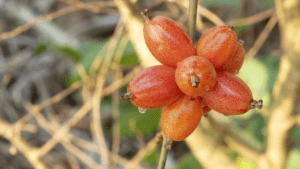
Elaeagnus plants (Elaeagnus Latifolia Linn)
Elaeagnus Latifolia Linn (elaeagnus plants) belongs to Elaeagnaceae and is known as Bastard oleaster. It is a deciduous big shrub or a small tree somewhat spiny. This shrub is mostly in semi-wild condition. It is a large evergreen spreading type woody shrub with rusty shiny scales that are often thorny.
Flowers
The flowers are hermaphrodite and are pollinated by bees. They are dull white with small tubes with fragrance appearing with the young leaves. The flowers are few in axillary clusters, perianth tube 8 mm with 4 triangular acute to oval lobes, silvery scaly outside having 4 stamens which are slightly exserted. Flower during September-December.
Fruit

Distribution
Medicinal properties of Elaeagnus plants
Astringent
Antioxidant
Prevent constipation
May be effective against pulmonary infection
The oil extract of the plant is used against pulmonary infections.
Nutritional profile of Elaeagnus plants
The fruits of Elaeagnus Latifolia Linn (elaeagnus plants) are rich in minerals, vitamins, and other essential fatty acids and bioactive compounds. Besides this, they are also abundant in ascorbic acid, phosphorus, potassium, manganese, calcium, sulfur, iron, and boron (4).
